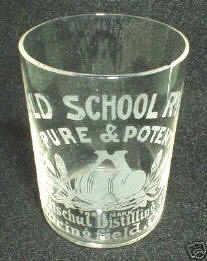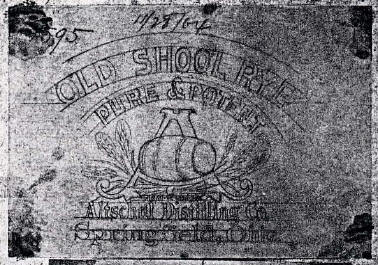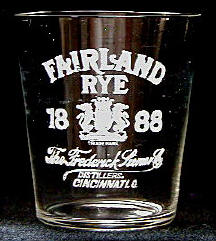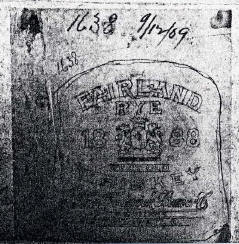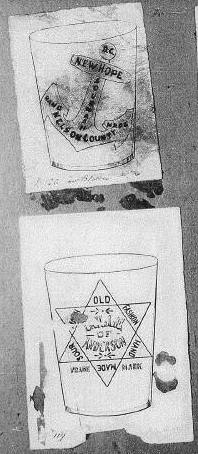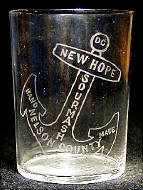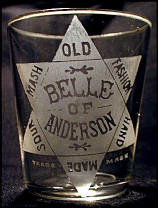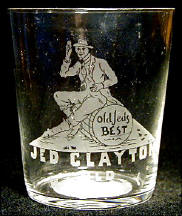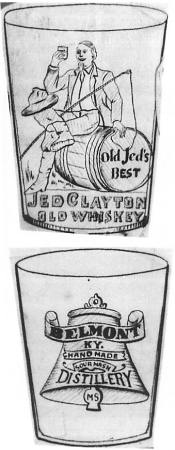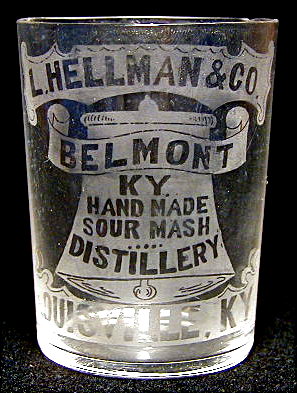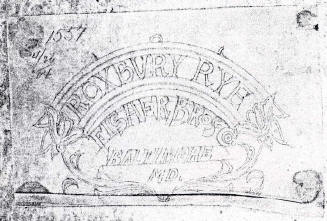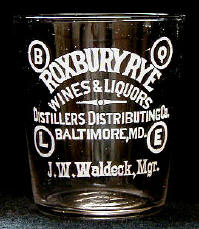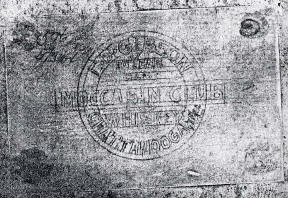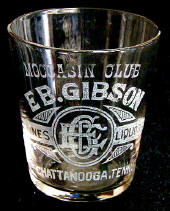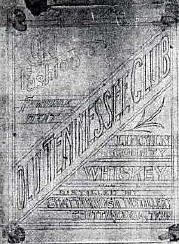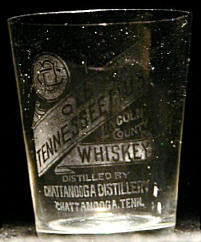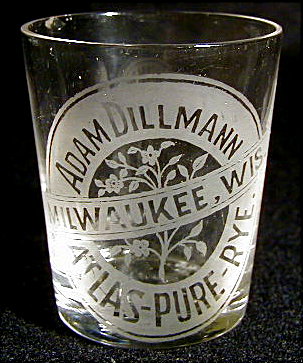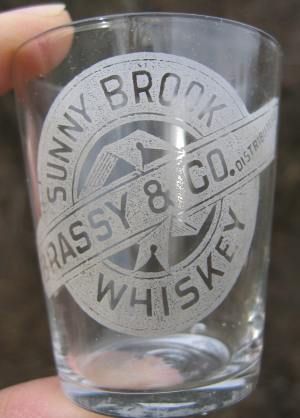|
In the latest
edition of The Common Stuff, Dick continues his look at George Truog
glasses and compares Truog sketches with the final product.
Read previous
edition |
|
The
Commercial Side of
George Truog,
Part II |
|
The Altschul Distilling Company glass from
Springfield, Ohio, is a known Truog glass.
How do we know this?
A drawing of this "barrel on A" label (albeit with a misspelled word)
appears in Truog’s scrapbook of designs and is shown on page 136 in
Dale’s book. (Note that the pre-pro database indicates that there are
several variations of this glass.)
The
Fairland Rye glass from the Frederick Siemer Company of Cincinnati,
Ohio, is a Truog glass; its label is shown on page 141 of Dale’s book.
It is clear that the drawings in Truog’s sketchbook do not always
represent the finished product. Pages 130 and 131 feature respectively
the "Roxbury
Rye" and "Moccasin
Club" labels. The glasses shown here are similar to but still
decidedly different from the Truog drawings. A drawing of the "Old
Tennessee Club" label is on page 132. It too differs from
the
actual glass.
There is a drawing of Stag Whiskey "Try a Horn" on page 137. The
actual glass differs a bit from this sketch, but in a different
manner than noted above. Truog’s preliminary sketch of the stag is
actually quite realistic. The stag on the glass, though, is an awful
picture. It looks like a dog wearing antlers and is reminiscent of Max,
the dog in the Dr. Seuss tale of how the Grinch stole Christmas. (Could
Dr. Seuss have been a shot collector? Did Truog inspire him to write his
epic Christmas story?)
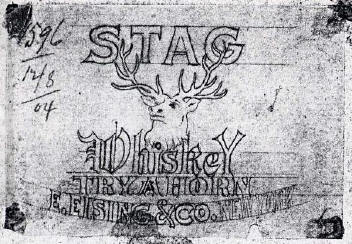 |
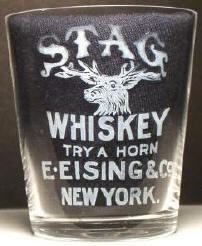 |
It is obvious that George Truog had a hand in
designing many of our favorite shot glasses. Unfortunately, we will
probably never know exactly how many. It is clear that glasses with
Truog traits are abundant. As mentioned earlier, Truog was known for
incorporating leaves and flowers within his designs. This
Adam Dillman glass shown at left below is one more example of this
Truog characteristic. But note how a ribbon of text runs diagonally
across the glass, from the lower left to the upper right.
Doesn’t this seem similar to the design of the rare Brassy & Co. Sunny
Brook glass shown at right?
Hmmm. . . .
|
